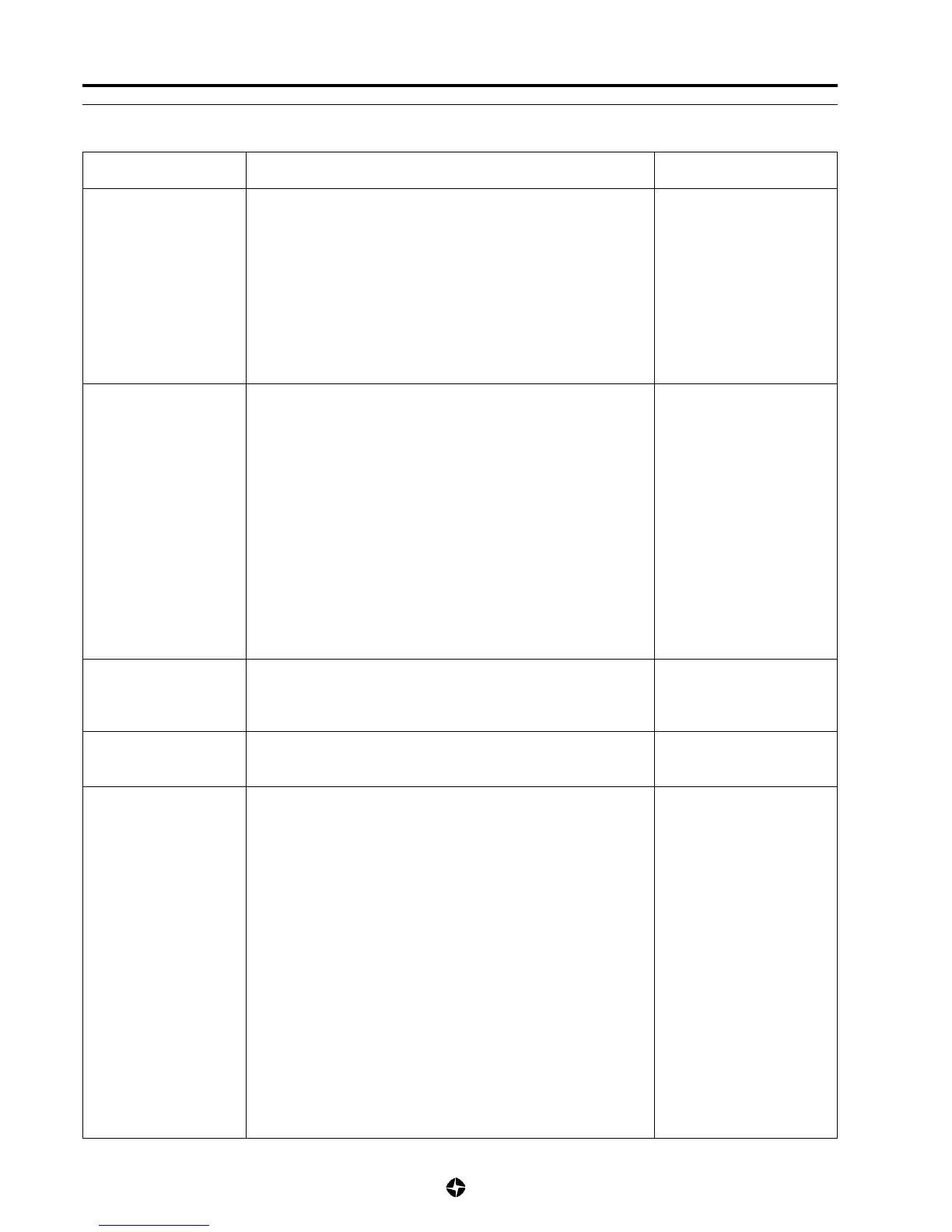5-10 BRAKES
DIAGNOSIS TABLE
Condition Possible cause Correction
Not enough
braking force
Brake pull
(Brakes not
working in unision)
Noises • Wear of brake pads Substitute brake pads
(free brakes
screech)
Back wheel brakes • Badly adjusted LSPV connecting spring length Check or correct.
blocking too early • Running faulty of the ensemble of the LSPV Substitute the ensemble.
Excessive pedal • Partial brake system failure
path course
(Pedal path course
too long) • Not enough brake fluid in the tank
• Air into the system (soft brake pedal/spongy feeling)
• Brake oil leakage
• Brake from brake lines discs or pads stained with oil
• Overheated brakes
• Broken shoes linings stained with oil or wet with water
• Air in system
• Badly adjusted LSPV connecting spring length
• Broken LSPV connecting spring
• Faulty spring connectors
Find out the location of the
leaks and repair.
Clean or substitute.
Find out the reason and
repair.
Repair or substitute.
Purge the system.
Revise or adjust.
Substitute.
Substitute.
• Uneven tyres pressure
• Wheel alignment inadequately adjusted
• Unequal tyres in same axle
• Damaged pipes or brake hoses
• Faulty running of the brake calliper assembly
• Loosened suspension pieces
• Loosened brake caliper
Inflate uniformly.
Correct as specified
Use tires with thread as
equal as possible in same
axle.
Look for damaged sleeves
Check for gripped of faulty
pistons and check the
brake caliper sliding
bushing lubrication.
Check all fixtures at
suspension.
Check and tighten fixing
elements according to
specifications.
Check brake system in
order to carry out
necessary repairs.
Fill tank with
recommended brake fluid.
Check for leaks and air in
the system.
Check warning light.
If required, purge the
system.
Purge the system.

